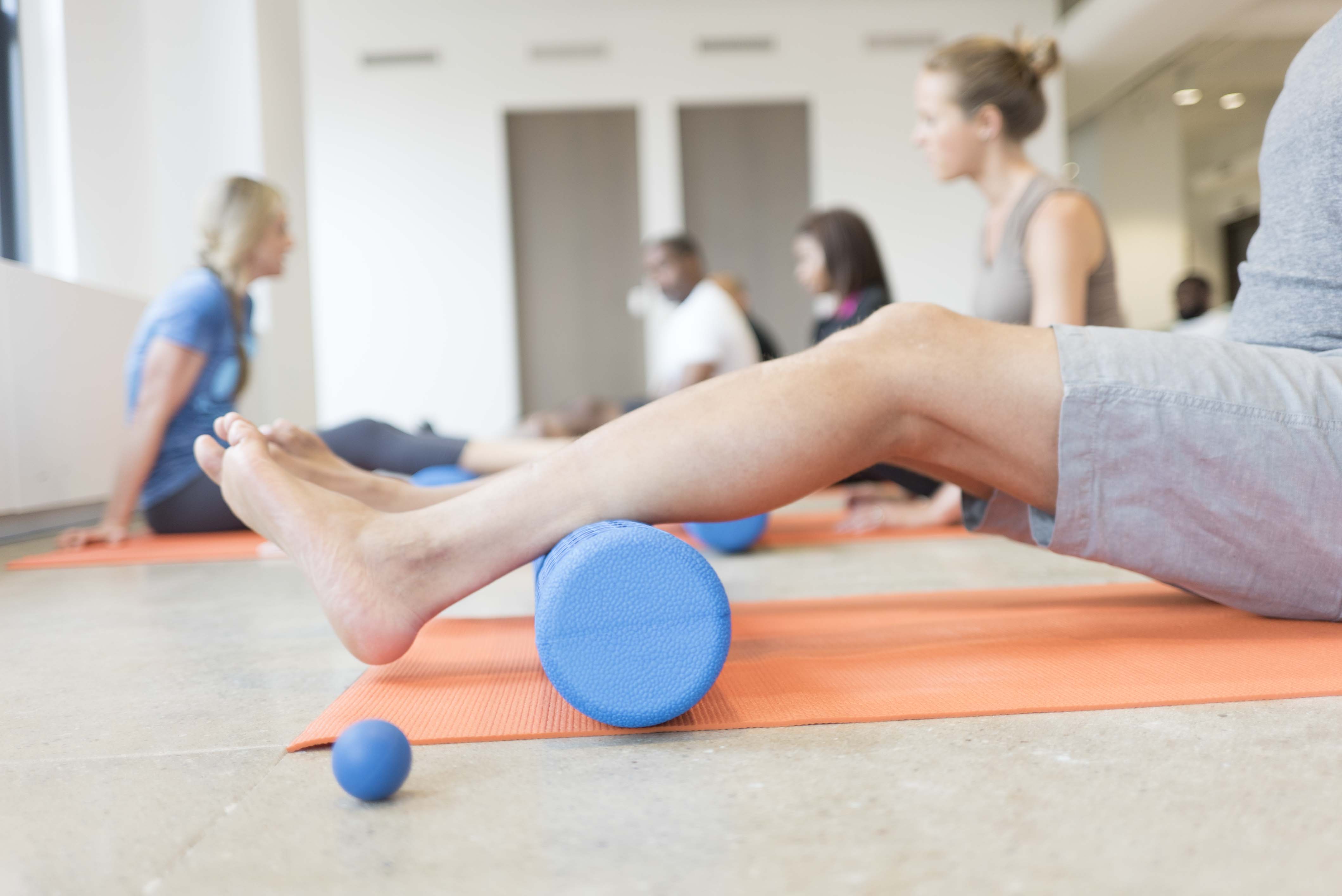The Melt Method
Taking physical therapy into your own hands.
The self-care trend has collided with the group fitness evolution to give rise to a new wave of classes aimed at rehabilitation, “prehabilitation” (injury prevention), and holistic healing. Classes focused on meditation, breathing, stretching, even laughing and screaming, are being heralded as therapy for body, mind, and spirit alike.
Such classes are taking the work that a therapist—a massage therapist, a physiotherapist, a psychologist—would otherwise do, and teaching participants how to administer that work—or, the effects of that work—to themselves. At the forefront of this movement is Melt, a specialized method of using foam rollers for self-massage.
Developed in 2001 by Sue Hitzman, a fitness instructor turned bodyworker in New York, Melt began as an effort to give clients homework; it was a way for them to take home the manual therapy and massage that Hitzman was administering to them in their one-on-one appointments. Now, Melt has expanded, and in addition to how-to books and videos, there are plenty of certified instructors who offer Melt in group settings around North America.
One such certified Melt instructor is Jey Wyder, owner and master instructor at the Dailey Method Vancouver, a barre and cycle studio that offers self-care classes to complement intensive work outs. Wyder’s discovery of Melt was serendipitous; within the span of one week, three separate people (her sister, another barre instructor, and a yoga instructor) all approached her, raving about the results of Melt and insisting that it not only would abate her own chronic neck pain but also would appeal to clients at the Dailey Method who came to her with questions about discomfort in certain postures in class.
After years of investing in massage and physiotherapy treatments in vain, a few easy moments of self-massage had done the trick.
Wyder did one session—a hand treatment with soft balls that accompany the rollers—and her neck pain noticeably diminished. After years of investing in massage and physiotherapy treatments in vain, a few easy moments of self-massage had done the trick. Wyder completed her certification and introduced the class at her studio.
At a recent lunchtime “Melt Express”—a 45-minutes noontime class on a Friday in the airy Kitsilano studio—Wyder began the class with a guided self-assessment of areas in the body that tend to accumulate “stuck stress.” Then, after a series of breathing exercises and gentle rocking on the roller, the self-massage began.
Guided by Wyder, the class rolled out the base of the skull, shoulder blades, thighs, calves, even the sternum and the jaw, with precise movements. “Imagine now that the roller is the massage therapist’s forearm on your low back,” said Wyder, as the class moved into a sacroiliac joint release. Unlike a deep stretch that targets stiff and sore muscles, the soft, textured foam roller works over the fascial system, gently compressing and then releasing as an act of rehydration. Audible breathing indicated when a participant had hit a particularly tender area, working over lumps and bumps that are otherwise indiscernible. The class ended with a reassessment and a relaxing touch of lavender oil, after which participants exited, seemingly blissed out, as if after a day at the spa.
The simple secret of Melt is that it treats the body’s connective tissue, called fascia, so that gentle attention to one area can benefit the whole system.
The simple secret of Melt is that it treats the body’s connective tissue, called fascia, so that gentle attention to one area can benefit the whole system. Fascia gets dehydrated and stuck, and Melt works to loosen and hydrate them in order to reduce and prevent everything from minor aches to debilitating pain.
Wyder has witnessed the effects of Melt in many clients. One client had severe stiffness through her hips, and after trying Melt could bend forward and lift her knees with ease. Three clients have recovered from vertigo after initiating a rebalancing sequence on the roller into their routines, and several clients have eased various forms of chronic pain. “I used to send people to the physiotherapist regularly,” says Wyder, “But now I can usually troubleshoot issues with Melt and help people stay out of pain.”
Three months ago, a study published in Scientific Reports called the fascia, for the first time, “an organ in its own right,” and while researchers and scientists are currently debating the validity of this label, one thing not up for debate is that Melt was ahead of its time. Now, with the millennial insistence on self-care and a general rejuvenated interest in holistic health, Melt and its likeminded methods are finally getting the attention that they deserve.
_________
Never miss a story. Sign up for NUVO’s weekly newsletter, here.






